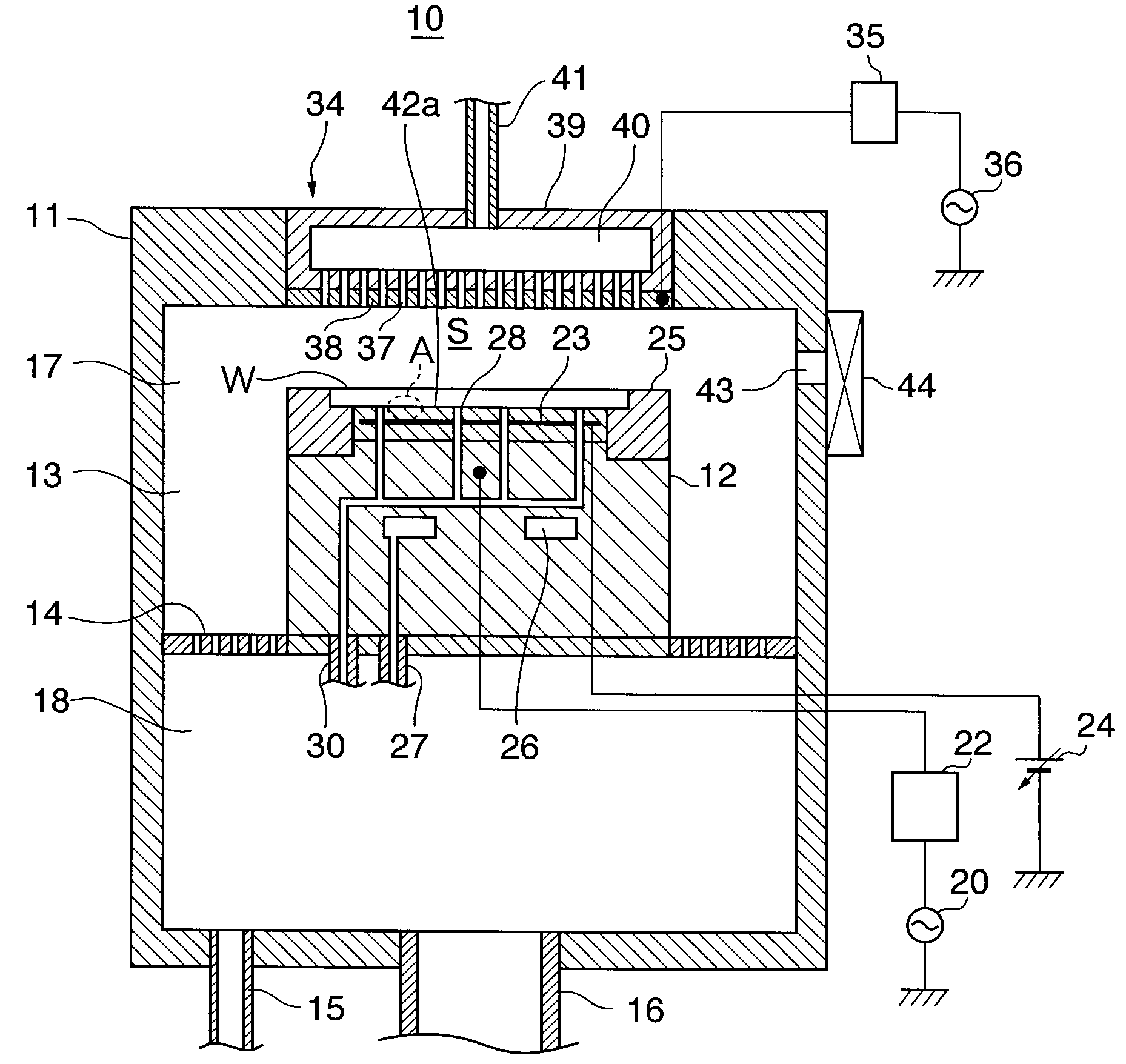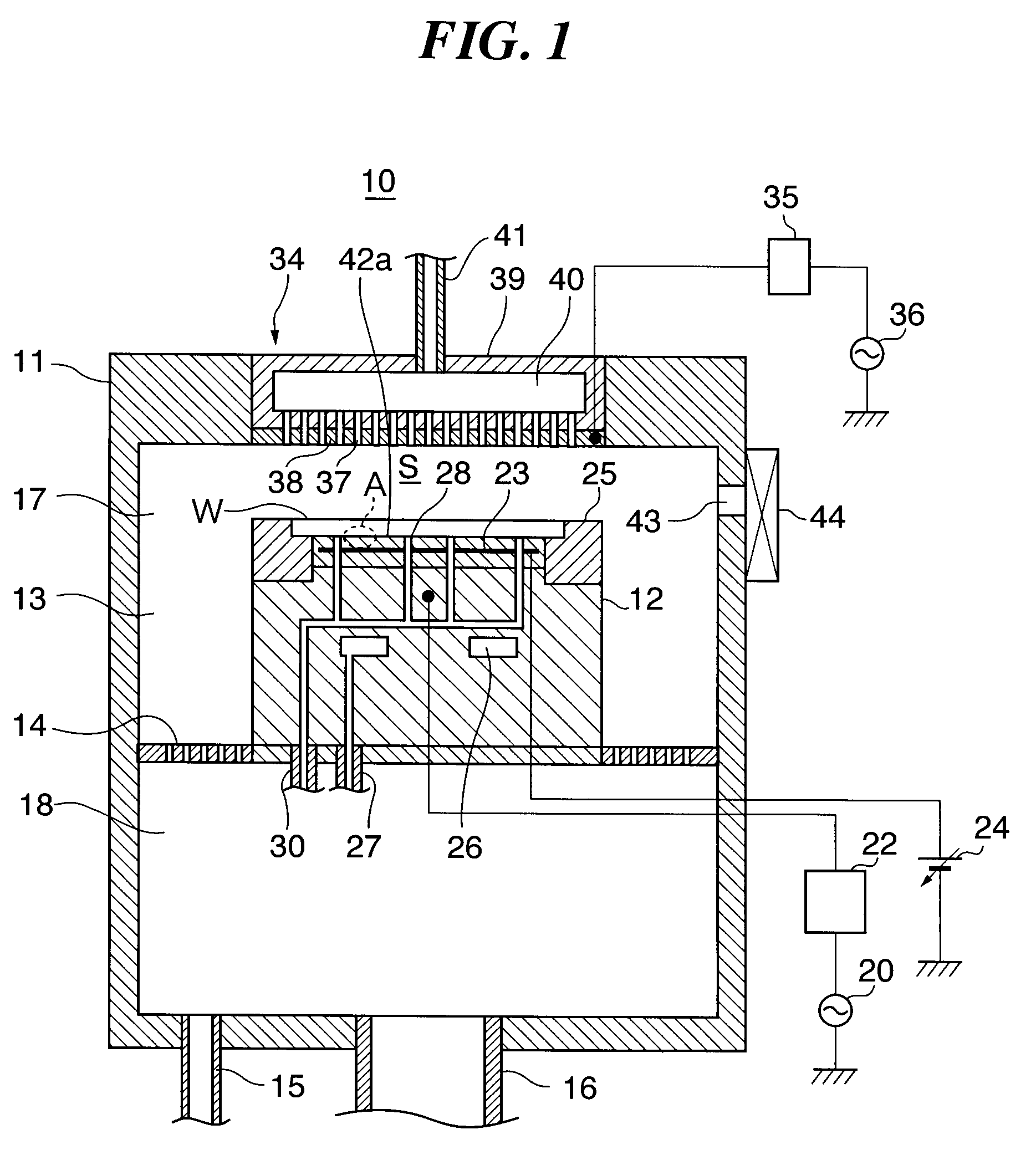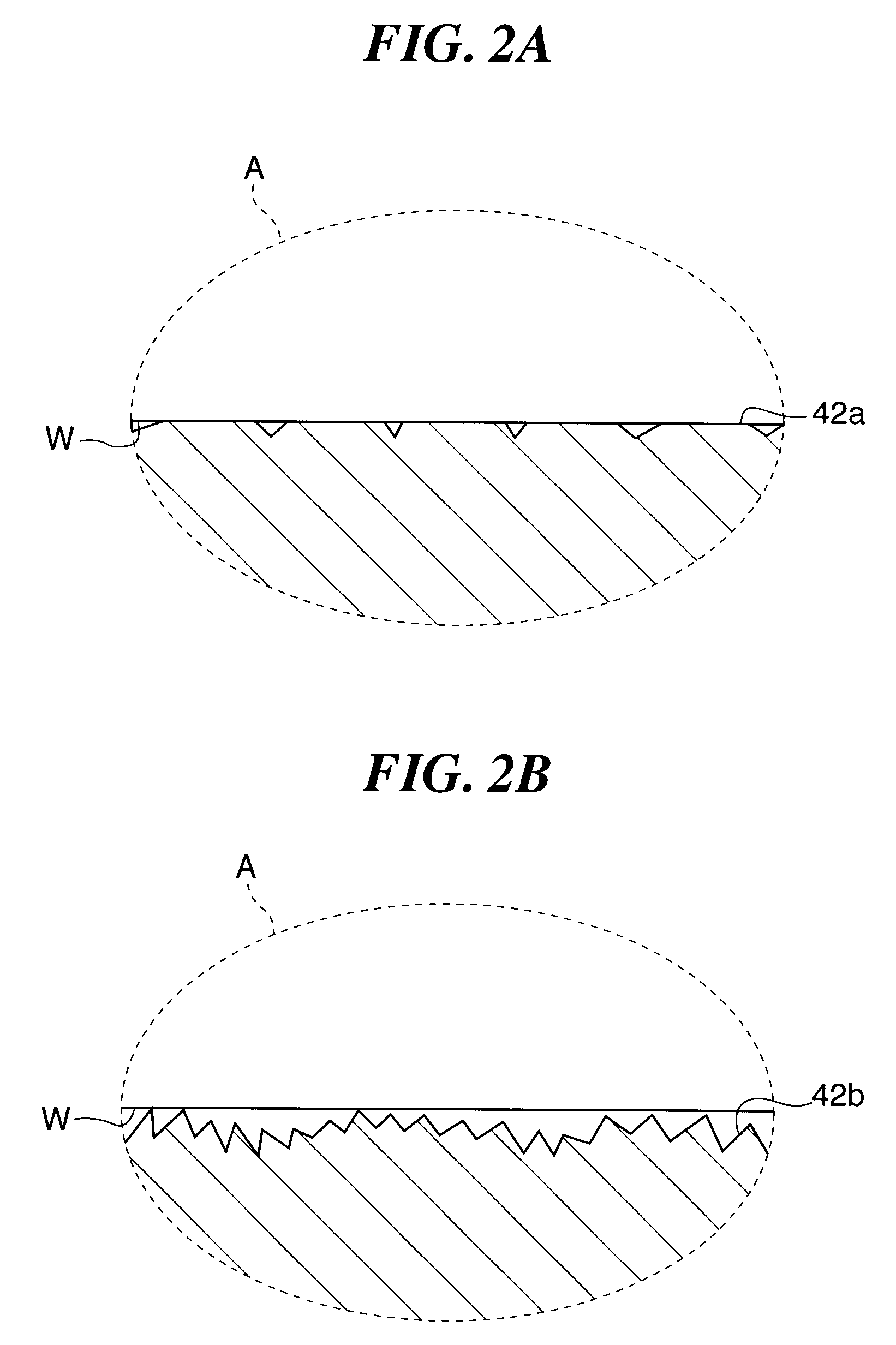Surface treatment method
a surface treatment and surface technology, applied in the direction of grinding machines, edge grinding machines, manufacturing tools, etc., can solve the problems of inability to control the temperature of wafers with good response, minute undulations on the surface of electrostatic chucks, and high power consumption, so as to improve the efficiency of heat transfer
- Summary
- Abstract
- Description
- Claims
- Application Information
AI Technical Summary
Benefits of technology
Problems solved by technology
Method used
Image
Examples
first embodiment
[0040]First, a substrate processing apparatus having therein an electrostatic chuck processed using a surface treatment method according to the present invention will be described.
[0041]FIG. 1 is a sectional view schematically showing the construction of the substrate processing apparatus having therein the electrostatic chuck processed using the surface treatment method according to the first embodiment of the present invention. The substrate processing apparatus is constructed such as to carry out etching processing on a semiconductor wafer as a substrate.
[0042]As shown in FIG. 1, the substrate processing apparatus 10 has a chamber 11 in which is housed a semiconductor wafer (hereinafter referred to merely as a “wafer”) W having a diameter of, for example, 300 mm. A cylindrical susceptor 12 is disposed in the chamber 11 as a stage on which the wafer W is mounted. In the substrate processing apparatus 10, a side exhaust path 13 that acts as a flow path through which gas above the s...
second embodiment
[0068]Next, a surface treatment method according to the present invention will be described.
[0069]For the present embodiment, the construction and operation are basically the same as for the first embodiment described above, the only difference to the first embodiment being that the plate lapping step is omitted. Features of the construction and operation that are the same as in the first embodiment will thus not be described, only features of the construction and operation that are different to in the first embodiment being described below with reference to FIGS. 3.
[0070]In the surface treatment method according to the present embodiment, the electrostatic chuck is subjected to the thermal spraying step shown in FIG. 3A, then to the grinding step shown in FIG. 3C, and then to the tape lapping step shown in FIG. 3G.
[0071]In the present embodiment, after the tape lapping step, there are minute undulations on the surface of the electrostatic chuck, but regardless of the state of the u...
third embodiment
[0073]Next, a surface treatment method according to the present invention will be described.
[0074]For the present embodiment, the construction and operation are basically the same as for the first embodiment described above, the only difference to the first embodiment being that the grinding step is omitted. Features of the construction and operation that are the same as in the first embodiment will thus not be described, only features of the construction and operation that are different to those in the first embodiment being described below with reference to FIGS. 3.
[0075]In the surface treatment method according to the present embodiment, the electrostatic chuck is subjected to the thermal spraying step shown in FIG. 3A, then to the plate lapping step shown in FIG. 3E, and then to the tape lapping step shown in FIG. 3G.
[0076]In the present embodiment, after the tape lapping step, the surface of the electrostatic chuck has been flattened, and furthermore the extreme surface layer o...
PUM
| Property | Measurement | Unit |
|---|---|---|
| diameter | aaaaa | aaaaa |
| pressure | aaaaa | aaaaa |
| flatness | aaaaa | aaaaa |
Abstract
Description
Claims
Application Information
 Login to View More
Login to View More - R&D
- Intellectual Property
- Life Sciences
- Materials
- Tech Scout
- Unparalleled Data Quality
- Higher Quality Content
- 60% Fewer Hallucinations
Browse by: Latest US Patents, China's latest patents, Technical Efficacy Thesaurus, Application Domain, Technology Topic, Popular Technical Reports.
© 2025 PatSnap. All rights reserved.Legal|Privacy policy|Modern Slavery Act Transparency Statement|Sitemap|About US| Contact US: help@patsnap.com



